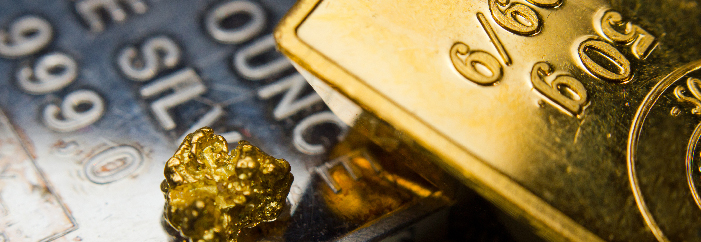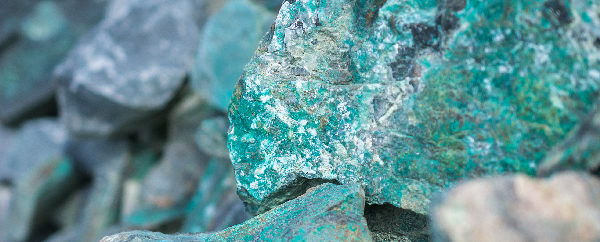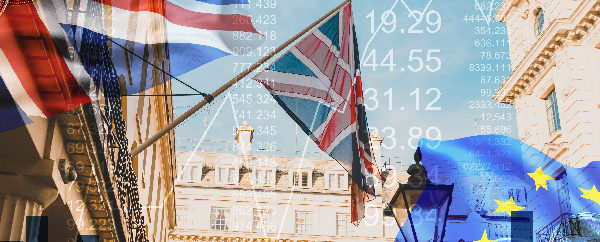Gold is the go-to ‘store of value’ for investors, many of whom see the precious metal as one of the only assets or commodities that rarely fall significantly in price.
Its versatility, functional and aesthetic appeal, and a relative scarcity of supply all help to ensure that even if one market for gold drops, there is sufficient demand from elsewhere to outweigh the metal’s availability.
But there are times when gold’s value falls, for example in the last quarter of 2019, when it dropped from a peak of over $1,550 an ounce in early September to a low of around $1,450 in November.
Since mid-December, gold prices have been rallying and the yellow metal is once again trading around the $1,550 mark – a reminder of why it is so popular with investors for its ability to recover full value in the short term.
However, if gold falls again in 2020, what are the alternatives? One place investors could have put their funds in late 2019 was palladium, which is driven by more conventional supply and demand dynamics.
The price of palladium in 2019
It seems likely that 2019 will go down as the breakout year for palladium. The precious metal has gone through several value cycles in the past decade, including:
- Trading around $700-800 per ounce from late 2010 to mid-2015.
- A relatively brief slump to $500-550 until mid-2016.
- Steady growth to pass $1,000 per ounce at the end of 2017.
Palladium prices held at or near $1,000 until mid-August 2018 when the surge really started. By December 31st the spot price per ounce was nearing $1,300. In 2019 it hit peaks of $1,588 on March 18th and $1,560 on July 8th.
High demand saw palladium prices continue to skyrocket in the second half of the year, eclipsing gold to end 2019 on $1,955 an ounce and climbing further to $2,475 by January 20th 2020.
So what is driving palladium’s value so much higher so quickly? It’s an investor’s perfect storm: a combination of high demand from industry, high demand from speculative investors, and a reluctance to sell from those who already hold palladium.
Driven by demand
One of palladium’s main applications is in automotive manufacturing, where it acts as an agent to reduce harmful emissions from petrol-engine vehicles.
Although the automotive market has been under pressure in recent months, this has been outweighed by worries about the short supply of palladium, which has led to substantial orders and a corresponding shift in the balance from supply to demand.
With palladium prices rising and other precious metals including gold, silver, and platinum all performing relatively poorly, investors have piled on to palladium, again adding to the spiralling demand and creating a positive feedback loop taking prices even higher.
And for those with palladium already in their portfolio, the stratospheric gains over the past year have put the more ambitious investors into ‘wait and see’ mode as they look to sell at the peak price, whenever it arrives.
If the market decides that moment has come, it could see the balance shift considerably as investors unload their stocks, so it remains to be seen whether we are witnessing a palladium bubble or an upward correction in the commodity’s value that will establish a new long-term benchmark.
A return to glittering form?
Returning to gold, the slump in late 2019 had investors and analysts concerned about the potential of a head-and-shoulders pattern – two smaller peaks either side of a central larger peak in prices, before returning to the long-term low.
Gold had only recently passed $1,500 an ounce for the first time since the spring of 2013, so a quick correction to the mid-$1,300 range was not an unreasonable expectation.
In fact, we now know that this did not occur. There was a slight fall in November, but demand rallied to round out the year with significant gains in December.
At around $1,550, gold is now tracing an upward trajectory similar to that seen in mid-2011 when markets were turbulent due to the rumbling recession. That surge took the metal to over $1,860 an ounce in early September – a price many investors would like to see again in 2020.
For anyone who bought into gold during most of the 2010s, the metal is finally delivering the kind of gains they may have been hoping to make much faster; for investors who got into gold during the first decade of the 2000s, it is probably well above their purchase price, even accounting for inflation.
Should I buy gold or palladium?
If you’re looking at palladium’s growth chart and wondering why you didn’t buy sooner, it’s probably a fair question. It’s impossible to predict just how high a surge will go, and the factors that will either sustain or reverse the trend.
Likewise, with gold, the expected head-and-shoulders pattern did not really emerge in 2019 and even if it does so in 2020, the prices involved are likely to be higher.
There may still be further gains to be had from palladium, but the higher prices go and the more the trend is driven by investors rather than industry, the greater the risk that the bubble will burst.
However, if you suspect that supplies of palladium are as scarce as manufacturer’s fear, you might still believe that its long-term benchmark value will be towards the top end of its recent growth.
Gold certainly seems to be starting to glitter at its best again after a decade aboard the struggle bus.
As a store of value, it seems set to stay as the first choice for investors – whether you make use of that for direct capital gains or as a hedging and diversification strategy against less historically proven commodities like palladium.
https://goldprice.com/palladium-spot-price/
https://goldprice.com/gold-spot-price/
Disclaimer: The information provided here is not investment, tax or financial advice. You should consult with a licensed professional for advice concerning your specific situation.




